- Clone
- SA271G2 (See other available formats)
- Regulatory Status
- RUO
- Other Names
- Ms4a1, Ly-44
- Isotype
- Rat IgG2b, κ
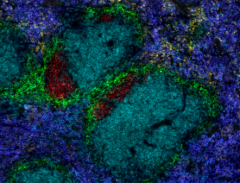
-

C57BL/6 mice were injected intravenously with 250 μg of Ultra-LEAF™ Purified anti-mouse CD20 (clone SA271G2) (top panel) or Ultra-LEAF™ purified rat IgG2b, isotype control (bottom panel). At day 7, the mice were sacrificed, spleens were collected, sectioned and stained for microscopy analysis. CD19 is shown in red, CD3 in cyan, CD169 in green, CD11b in yellow, and F4/80 in blue. -

-

C57BL/6J mice were injected i.v. with 250 µg of Ultra-LEAF™ purified anti-mouse CD20 (clone SA271G2) (top) or Ultra-LEAF™ purified rat IgG2b, κ isotype control. At day 7 the mice were bled and the samples were stained with anti-mouse CD19 APC and anti-mouse CD45 Brilliant Violet 421™. Data shown is representative of 4 mice per group. -

| Cat # | Size | Price | Quantity Check Availability | ||
|---|---|---|---|---|---|
| 152104 | 1 mg | $149.00 | |||
| 152115 | 5 mg | $539.00 | |||
| 152116 | 25 mg | $1408.00 | |||
Select size of product is eligible for a 40% discount! Promotion valid until December 31, 2024. Exclusions apply. To view full promotion terms and conditions or to contact your local BioLegend representative to receive a quote, visit our webpage.
CD20 is a 33-37 kD protein, a member of the MS4A family, with four transmembrane spanning regions that present as a homo-oligomeric complexes in the cell surface when associating with MHC class I and II, CD53, CD81, and CD82. CD20 is expressed on B cells and a subset of T cells, but not on plasma cells. CD20 regulates B-cell activation and proliferation. Its ligation promotes transmembrane Ca2+ trafficking. CD20 is an important therapeutic target in the treatment of B cell lymphomas and leukemias.
Product Details
- Verified Reactivity
- Mouse
- Antibody Type
- Monoclonal
- Host Species
- Rat
- Immunogen
- Mouse CD20 transfected cells
- Formulation
- 0.2 µm filtered in phosphate-buffered solution, pH 7.2, containing no preservative.
- Preparation
- The Ultra-LEAF™ (Low Endotoxin, Azide-Free) antibody was purified by affinity chromatography.
- Concentration
- The antibody is bottled at the concentration indicated on the vial, typically between 2 mg/mL and 3 mg/mL. Older lots may have also been bottled at 1 mg/mL. To obtain lot-specific concentration and expiration, please enter the lot number in our Certificate of Analysis online tool.
- Storage & Handling
- The antibody solution should be stored undiluted between 2°C and 8°C. This Ultra-LEAF™ solution contains no preservative; handle under aseptic conditions.
- Application
-
FC - Quality tested
Depletion - Verified - Recommended Usage
-
Each lot of this antibody is quality control tested by immunofluorescent staining with flow cytometric analysis. For flow cytometric staining, the suggested use of this reagent is ≤0.25 µg per million cells in 100 µl volume or 100 µl of whole blood. It is recommended that the reagent be titrated for optimal performance for each application. Clone SA271G2 has been validated for in vivo depletion of mouse B cells. Learn more...
- Additional Product Notes
-
View more applications data for this product in our Scientific Poster Library.
Watch a Scientific Poster video of this product. -
Application References
(PubMed link indicates BioLegend citation) -
- Bongard, A, et al. 2019. PLoS Pathog. 15(9):e1008043. (Depletion) Pubmed
- Product Citations
-
- RRID
-
AB_2629619 (BioLegend Cat. No. 152104)
AB_2629619 (BioLegend Cat. No. 152115)
AB_2629619 (BioLegend Cat. No. 152116)
Antigen Details
- Structure
- Member of the MS4A family, four transmembrane spanning regions, three isoforms of 37, 35, and 37 kD, depending on the phosphorylation degree.
- Distribution
-
B cells and a subset of T cells
- Function
- Regulates B-cell activation and proliferation
- Interaction
- Associates with MHC class I and II, CD53, CD81, and CD82
- Cell Type
- B cells, T cells
- Biology Area
- Costimulatory Molecules, Immunology
- Molecular Family
- CD Molecules
- Antigen References
-
1. Morsy DE, et al. 2013. J. Immunol. 191:3112.
2. Lund FE, Randall TD. 2010. Nat. Rev. Immunol. 10:236.
3.Beers SA, et al. 2010. Blood 115:5191.
4. Kuijpers TW, et al. 2010. J. Clin. Invest. 120:214. - Gene ID
- 12482 View all products for this Gene ID
- UniProt
- View information about CD20 on UniProt.org
Other Formats
View All CD20 Reagents Request Custom Conjugation| Description | Clone | Applications |
|---|---|---|
| Purified anti-mouse CD20 | SA271G2 | FC,Depletion |
| Ultra-LEAF™ Purified anti-mouse CD20 | SA271G2 | FC,Depletion |
| PE anti-mouse CD20 | SA271G2 | FC |
| APC anti-mouse CD20 | SA271G2 | FC |
| PE/Dazzle™ 594 anti-mouse CD20 Antibody | SA271G2 | FC |
| FITC anti-mouse CD20 | SA271G2 | FC |
| PE/Cyanine5 anti-mouse CD20 | SA271G2 | FC |
| APC/Fire™ 750 anti-mouse CD20 | SA271G2 | FC |
Compare Data Across All Formats
This data display is provided for general comparisons between formats.
Your actual data may vary due to variations in samples, target cells, instruments and their settings, staining conditions, and other factors.
If you need assistance with selecting the best format contact our expert technical support team.
-
Purified anti-mouse CD20
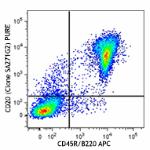
C57BL/6 mouse splenocytes were stained with CD45R/B220 APC a... 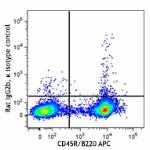
-
Ultra-LEAF™ Purified anti-mouse CD20
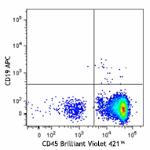
C57BL/6J mice were injected i.v. with 250 µg of Ultra-LEAF™ ... 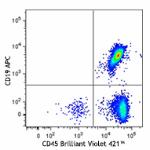
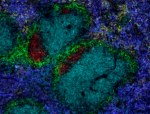
C57BL/6 mice were injected intravenously with 250 μg of Ultr... 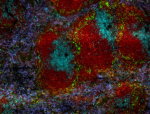
-
PE anti-mouse CD20

C57BL/6 mouse splenocytes were stained with CD45R/B220 APC/C... -
APC anti-mouse CD20

C57BL/6 mouse splenocytes were stained with CD45R/B220 APC/C... -
PE/Dazzle™ 594 anti-mouse CD20 Antibody

C57BL/6 mouse splenocytes were stained with CD45R/B220 APC a... -
FITC anti-mouse CD20

C57BL/6 mouse splenocytes were stained with CD45R/B220 APC/C... -
PE/Cyanine5 anti-mouse CD20

C57BL/6 mouse splenocytes were stained with anti-mouse CD45R... -
APC/Fire™ 750 anti-mouse CD20

C57BL/6 mouse splenocytes were stained with anti-mouse CD45R...
